On January 28, 2021, an Antonov-124 transport plane was loaded up with four F-16s. The plane’s mission was to transport the jets to a location in America’s Southwest, thousands of miles away, where they would be reassembled so they could go up against U.S. military fighter aircraft in mock air combat. Their arrival in the U.S. is the culmination of a vision that started in 2014 when the aerial adversary company Top Aces signed a sales agreement with the Israel Ministry of Defense for the purchase of 29 of their older F-16A and Bs, those types being known as the “Netz” in that country. Here’s the story of how the first private 4th generation fighter adversary jets to ever arrive in the United States did so, and how Top Ace’s overall vision for them is becoming a reality.
Top Aces was founded in 2000 by three former Royal Canadian Air Force
CF-18 fighter pilots who saw an opportunity to provide adversary support to the Canadian armed forces. In 2005, the company signed a $94-million contract with the Canadian government for the supply of contracted combat support and adversary training for at least the next 10 years. They have also been the exclusive provider of Adversary and Joint Terminal Attack Controller (JTAC) training for the German military since 2015.
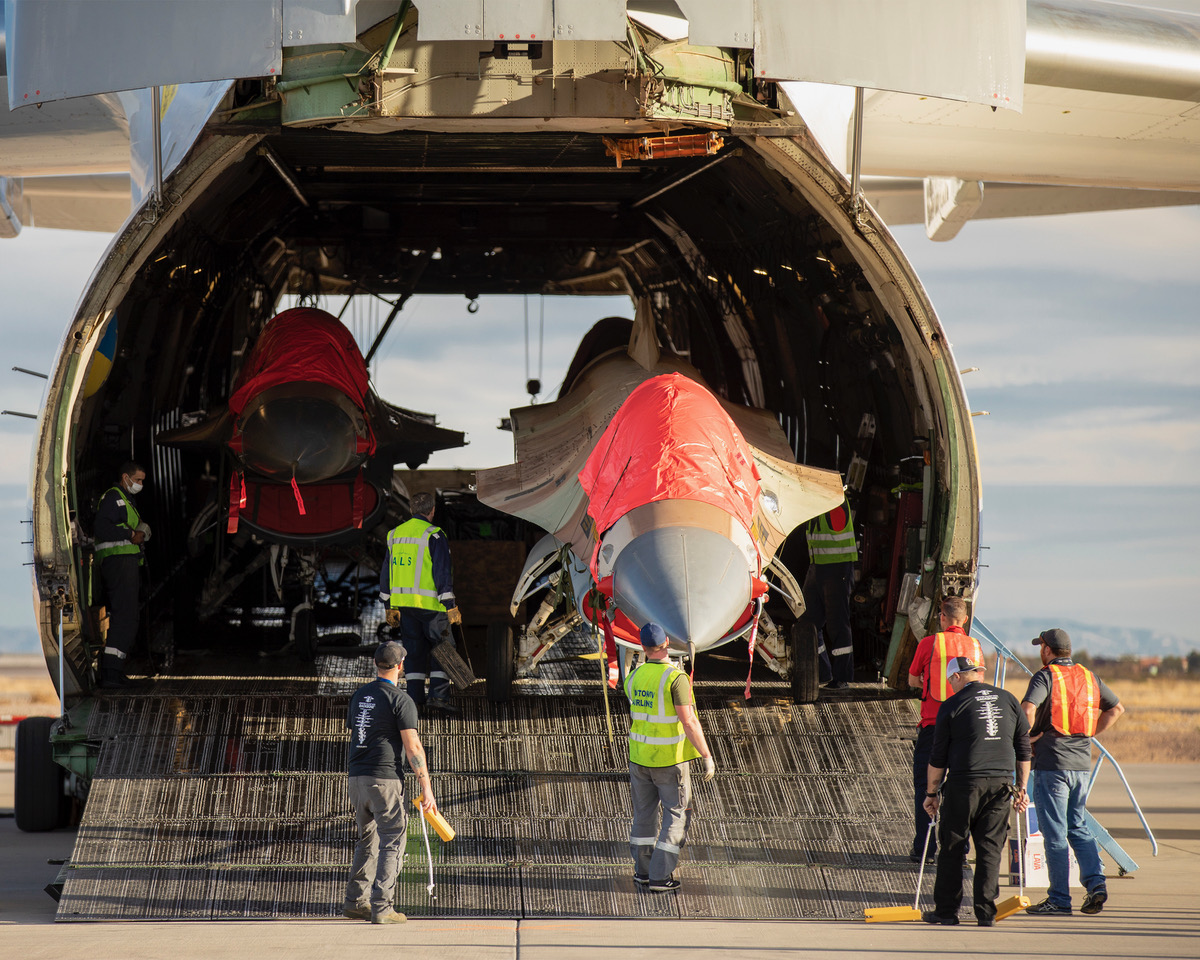
The company began pursuing a fleet of F-16s over the last several years in order to meet the training requirements of preparing next-generation U.S. fighter pilots flying aircraft like the F-35 Lightning II and F-22 Raptor. The F-16s represent a monumental leap in capability over the Top Aces’ current fleet of Dornier Alpha Jets and Douglas A-4 Skyhawks, the latter of which are over 50 years old. The Israel Netz was chosen because it was the first F-16 fleet readily available and the process regulated by the Department of State for importing such advanced weaponry is long and complicated, among other factors.
While contracted adversary support has been around for over two decades, in 2019, the US Air Force tapped seven private companies for a huge $6.4 billion contract opportunity for “Red Air and Close Air Support” training where contracted pilots would train against USAF pilots at several locations throughout the United States. Top Aces received an indefinite-delivery/indefinite-quantity (IDIQ) contract that will allow it to compete with Air USA, Airborne Tactical Advantage Company, Draken International, and Tactical Air Support for adversary air services at 12 U.S. Air Force bases. The contract runs until October 2024 and is estimated to involve between 40,000 to 50,000 flying hours per year.

Leading the effort of getting the F-16s flying in the adversary business is Russ Quinn. Quinn formally transitioned to the role of President of Top Aces Corp. on December 9, 2019. Before that, he served as the Chief Commercial Officer for the company. Quinn is no stranger to the F-16 or the adversary mindset. During his 26 year career in the United States Air Force, Quinn amassed over 3,300 flight hours in the F-16 and held several positions in F-16 squadrons around the globe. His career included a stint as a Solo Pilot for the USAF Aerial Demonstration Squadron, the Thunderbirds, during the 1995 and 1996 air show seasons, as well as squadron commander of the 22nd Fighter Squadron. His final flying assignment was employing the F-16 as an Aggressor pilot as Deputy Commander of the newly founded Adversary Tactics Group at Nellis Air Force Base in Nevada. It was there that Quinn became intimately familiar with the Aggressor business.
In the late 2000s, Colonel Terrence O’Shaughnessy was given the challenge by the Air Force Chief of Staff to start up a robust Aggressor capability at Nellis. The capability would not just be in the aircraft tactics but would also include standing up air defense aggressors which would focus on the surface to air missile threat as well as cyber and space aggressors. All of these squadrons would come together in the group. Quinn stated “we had F-16s in the 64th [Aggressor Squadron] and F-15s in the 65th so we had a great flying setup. It was the rebirth of the Aggressor culture at Nellis where we internalized the Aggressor concept of knowing, teaching, and replicating the threat. That organization still exists today and they are doing some really great work.”
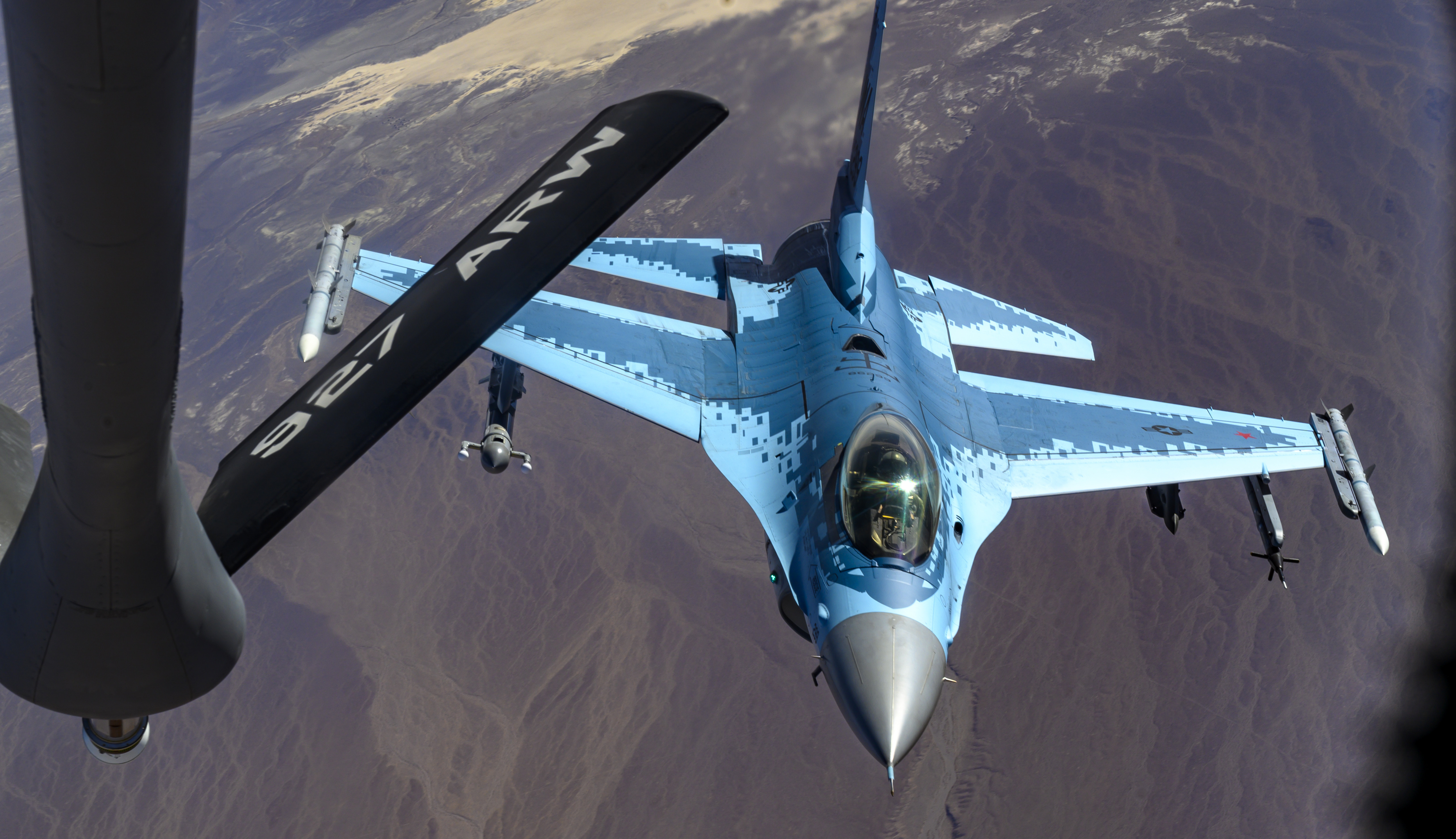
Quinn had the opportunity to fly the F-16 for over two decades, but the experience at Nellis gave him a deep appreciation for what it means to be an aggressor. Quinn said “It takes a very special kind of fighter pilot to be an aggressor. You have to be a giving kind of person to really go out as a professional aggressor and realize that your role is very much a training role. You are giving your expertise and talent to make the air force a better place. I was so impressed by the men and women that embraced the aggressor culture and I’m not just talking about the pilots. The commander of the Air Defense Squadron was probably the smartest electronic warfare guy I ever met. They all wanted to be the best at what they did, so the Air Force could be the best in the world. I hadn’t really experienced that before. I had seen aggressors at Red Flag and saw what they brought in terms of the brief and debrief, but to see everything they did was quite inspiring for me.”
You can check out our exclusive in-depth feature that goes behind the scenes of the U.S. Air Force’s aggressor program, including a ton of details on the new era they are about to embark on by clicking here.
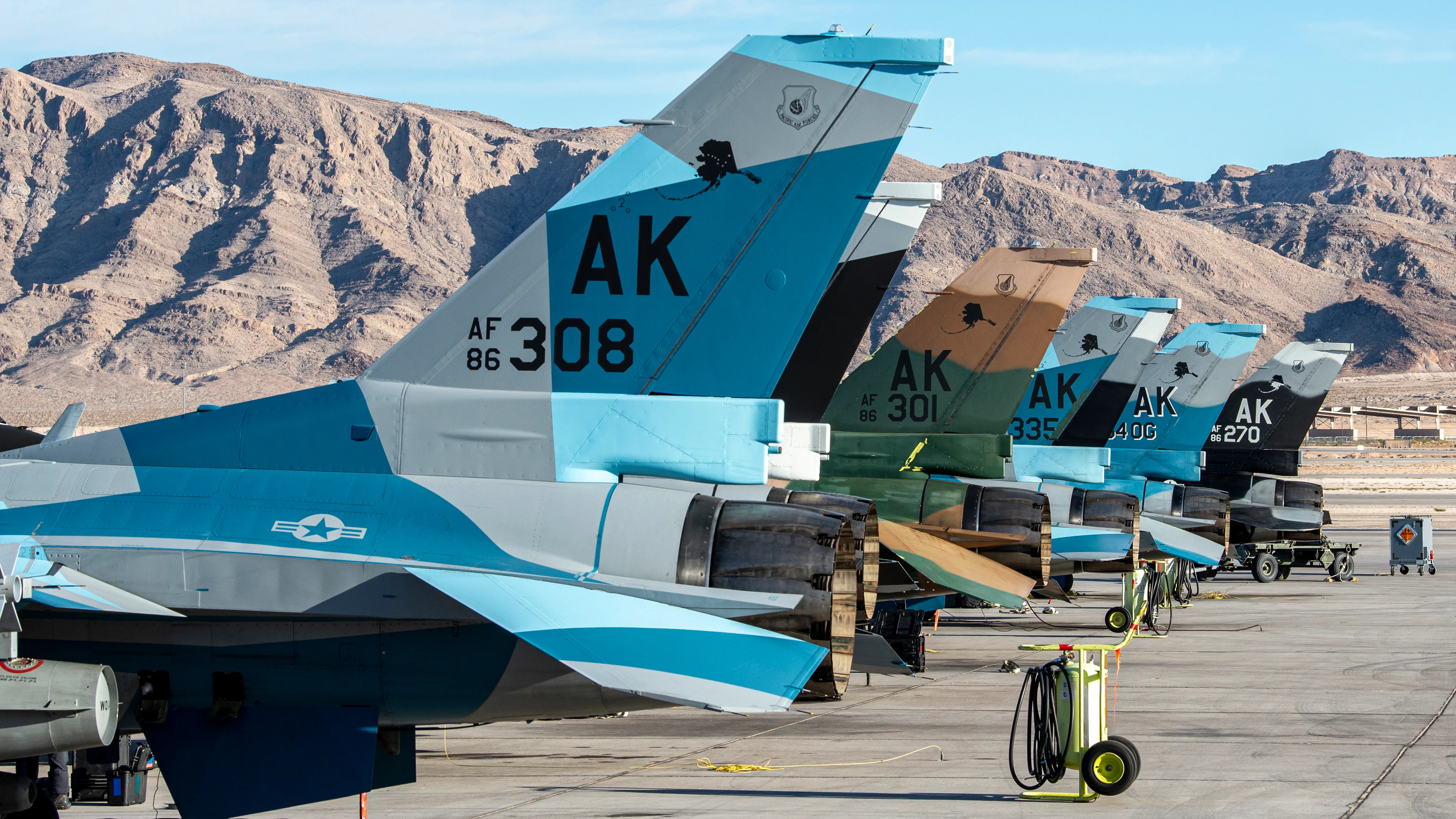
After leaving the Air Force, Quinn didn’t take the airline pilot route, but went onto the defense contractor business for a few years. He knew that there was commercial adversary business out there, but had never heard of Top Aces. Quinn told The War Zone “I got a call from Top Aces and they said they were looking for a high time F-16 leader who they thought would be able to take the F-16s they just purchased and build a business in the U.S. and get these planes to work supporting the Air Force and the Navy. They already had the sale agreement with the IMOD [Israeli Ministry of Defense] arranged. It took about six months where I asked a lot of hard questions about the plan, but the opportunity to bring the Aggressor culture into the commercial world was an opportunity I could not pass up. This was not just throwing metal up in the air, but rather as a chance to bring the next level of professionalism to commercial adversaries that hasn’t been seen yet.’’
Top Aces has been in the business for almost 20 years and started its initial work with the Dornier Alpha Jet trainer. While it was very reliable, it lacked a radar. They increased their capability with the A-4 Skyhawk in Germany, where they have an adversary air support detachment, but realized a need for an advanced aggressor to go up against new 5th generation fighter aircraft that were coming into squadrons in greater numbers, such as the F-35. “These legacy platforms are just not hacking it in terms of truly replicating the high-end threat with some of the major players on the world stage. The vision was to bring an advanced capability” said Quinn.
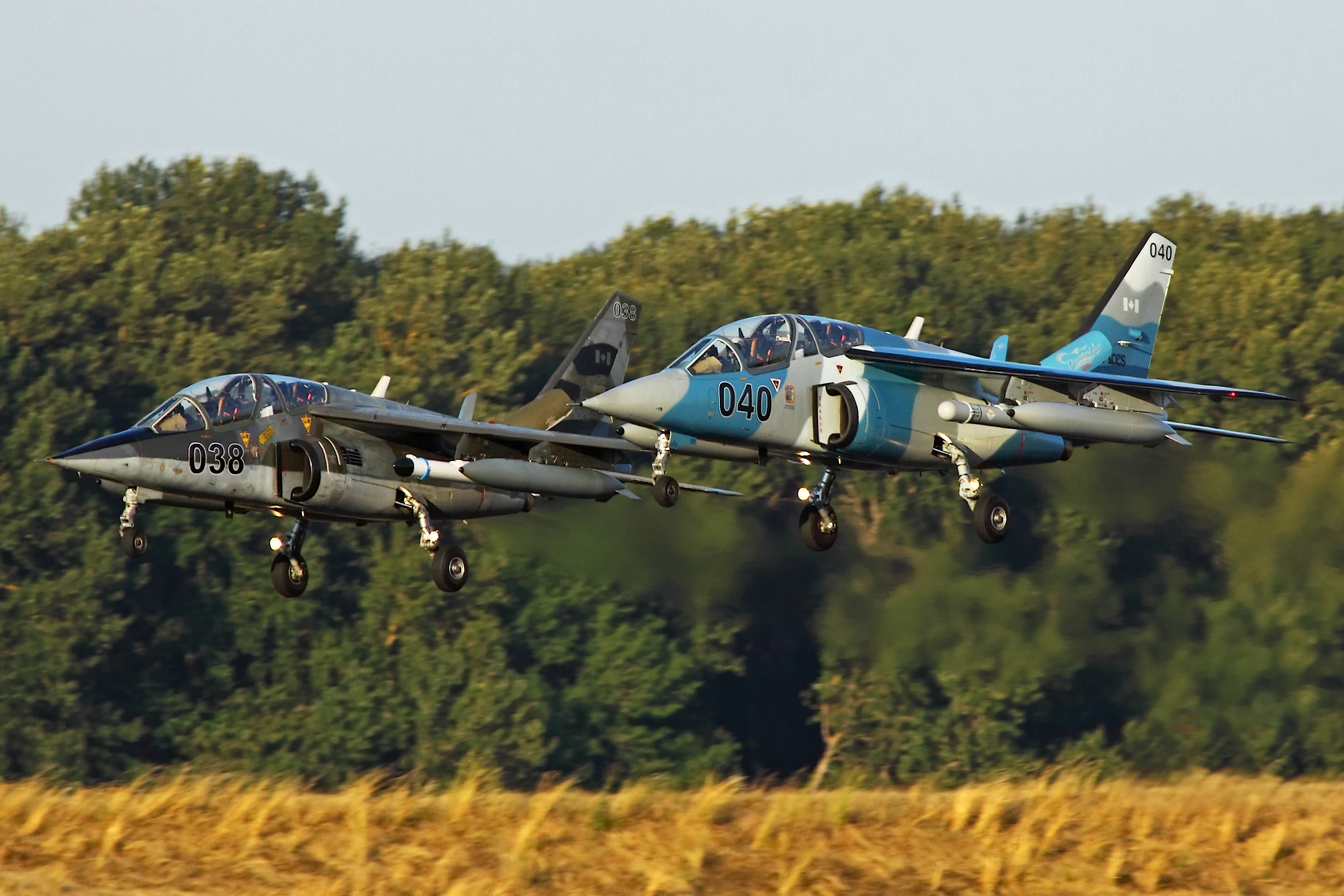
The F-16s that Top Aces purchased from Israel will receive several significant upgrades before they go up against Air Force pilots in the U.S. “What we have been investing in over the past five years is an open mission system architecture where we take a mission computer and add a Helmet Mounted Cueing System, AESA radar, and Link-16. We call it the Advanced Aggressor Mission System and it can go on different platforms. As we speak, our most senior engineers just completed operational test flights with the system on the A-4 in Canada and it went very, very well. The draft RFP [request for proposals] for Nellis just recently got released and it defines pretty nicely what capabilities they are looking for.” Top Aces declined to disclose what AESA radar will be included in the upgrade at this time.
The Helmet Mounted Cueing System technology has come a long way over the last few years and Top Aces has chosen the Scorpion system for the F-16. It’s a more reliable and less expensive option than the JHMCS system and has the ability to simulate the employment of high-off-boresight air-to-air missiles. As the Air Force changes and as the threat changes, having an open mission system gives Top Aces the ability to plug and play new systems and software applications to help optimize training for their customer air forces. Similar initiatives exist with other commercial aggressor providers.

Speaking about setting up the initial cadre of pilots at Top Aces, Quinn told us “We are not just looking for F-16 pilots. What we are bringing to this industry is a professional aggressor force. We are not looking for just high time F-16 pilots to put into these cockpits but rather high time aggressor pilots. These are men and women who have flown in the 64th, 65th, or 18th [Aggressor Squadrons] and they have really embraced the aggressor culture. We are looking for people with that giving mindset as an aggressor that we believe is absent in the commercial side right now.”
“We want to show the Air Force that we can bring that same level of professionalism that they enjoy with the active-duty force. I was very fortunate to be part of the aggressor business at Nellis and got to know a lot of great people. I reached out to several of them like Kevin ‘Shaggy’ Wilson. Shaggy is one of the most respected aggressor leaders that the Air Force ever produced, so I asked him to come join the team. We have a team of quality individuals who have decided to join the company and the reason is what we are trying to build here.”

The first 10 pilots that have been hired for the F-16 program have a combined 52 years in USAF aggressor squadrons and over 34,000 flight hours. It’s these numbers that Top Aces believes will give it the edge moving forward as the USAF looks for more robust aggressor capabilities as they adjust and refine requirements. Last year’s competition included six initial training units known as FTUs, but as the Nellis adversary air (ADAIR) contracting re-compete process begins, it is probable that so-called “Category C” capabilities will be needed.
These capabilities include the ability to replicate near-peer adversaries to better train 5th generation pilots flying the F-35 and F-22 by using a combination of technologies such as an AESA radar, IRST pods, and more updated captive carry air-to-air missiles. Top Aces is not disclosing what captive carry missiles it plans on using with their F-16s at this time. Overall, Top Aces believe this “Cat C” requirement will leave them in a unique position to be readily capable of providing advanced adversaries for the Air Force’s needs thanks to their burgeoning F-16 fleet.
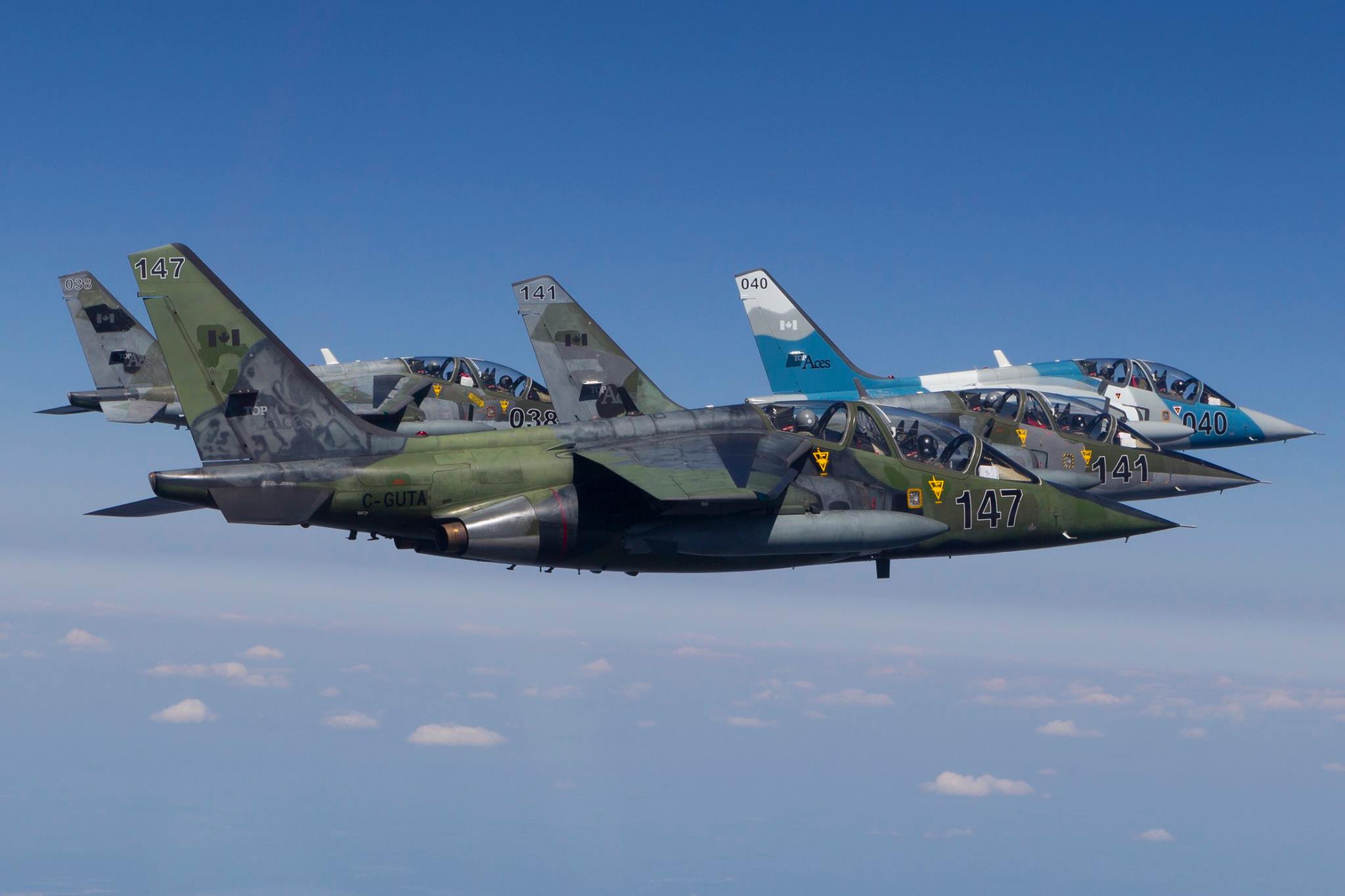
Top Aces knows that the U.S. Air Force is looking at commercial adversary support at several places, like Langley Air Force Base in Virginia, but they are also aware that United States Air Forces Europe (USAFE) is also looking for support, as well as its forces in the Pacific, so there are many options available for growth. Currently, Air Combat Command’s (ACC) contract called the Combat Air Forces Contract Air Support is the primary contracting vehicle to support the Air Force. The Navy just awarded the fighter jet services contract to ATAC and TacAir, the latter of which includes the contract at Naval Air Station Fallon in Nevada, but both contracts will re-competed in the coming years.
Top Aces’ plan is to get its F-16s certified over the next few months. There are some opportunities over the summer and into the fall where folks have expressed interest in putting these aircraft to work so, they are excited to get flying.
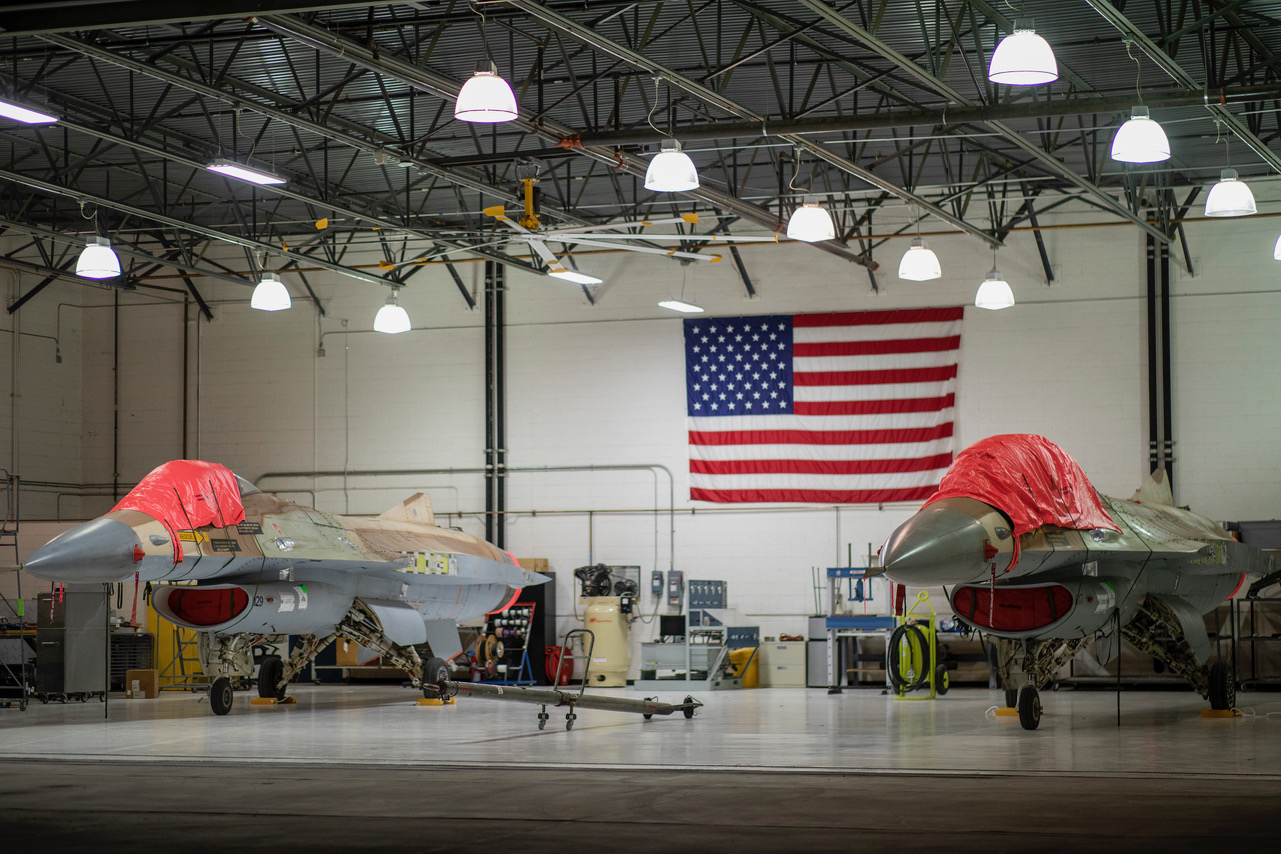
The 29 aircraft that Top Aces have purchased—none of which are being set aside for spares—still have a lot of airframe life left and more F-16s will likely become available for purchase as countries upgrade to newer aircraft like the F-35. Quinn said, “The F-16 is a great airplane and it’s the reason that it is the main aggressor aircraft for the U.S. and several other Air forces around the world. It’s small enough to be stealthy when you need it to be and its performance at visual range is fantastic. When you add the Helmet Mounted Cueing System you really are able to simulate a high-end threat. Having the diverse kinematic performance of the F-16 really allows you to replicate a significant variety of threat aircraft once you study and know what that aircraft can do. There really are only a few things that an F-16 can’t replicate. The F-16 is very much the complete package for us when combined with all of the upgrades.”
When asked about the high cost of operating a full-up 4th generation fighter like the F-16, Top Aces says it is fully aware of the cost to operate the F-16 and it will be higher than current 3rd generation aggressors that have flooded the market. At the same time, the firm believes the costs are offset by the capability that the F-16 will provide and with what the Air Force will want from contractor aggressors in the future. It is notable that another contractor, ATAC, offered the F-16 up against Tac Air’s F-5s for the adversary contract at Naval Air Station Fallon. The F-16s lost in large part due to being more expensive to operate over the upgraded F-5s, but that was a very different contract and the adversary marketplace is rapidly evolving.
As to what the aircraft will look like when they start flying with Top Aces pilots at the controls, they will retain their iconic Israeli Air Force desert schemes made famous by the film Iron Eagle—in fact, some of them may be movie stars—although with some small alterations. Most notably, their tails will get the aggressor treatment seen below.
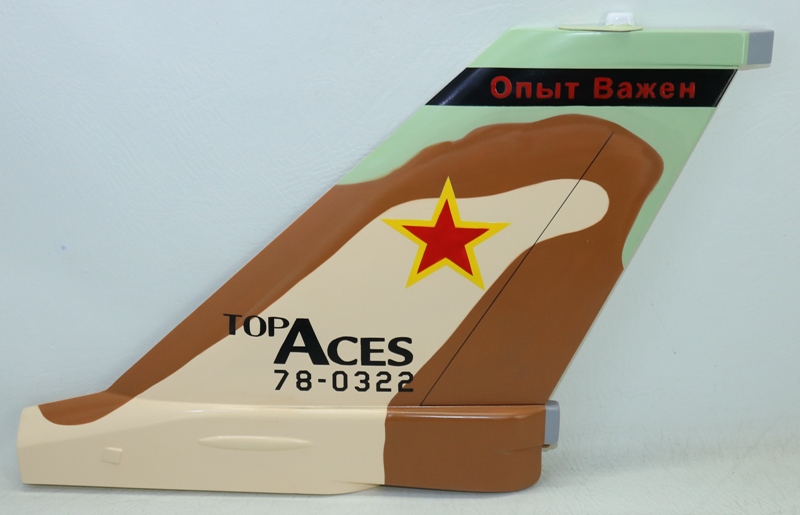
Like the other two aircraft that Top Aces operates, the 29 F-16s will be part of an F-16 Center of Excellence which is located at Mesa Airport in Arizona. It is at this location where the aircraft will be home-based and where most of the maintenance will be done.
From Mesa Airport, aircraft will be sent out much like detachments, depending on the needs of the contract. Quill said “In a notional example I’ll use Luke AFB [Air Force Base in Arizona] as an example where we see turn patterns of usually a four turn four, which means eight sorties a day. So, with this example, we would park six aircraft at that location and work those airplanes as required with a small maintenance footprint to do the small things needed to keep them flying, but most of the heavy maintenance and phased inspection will be done at the main operating base.”
“The key to making contract adversaries work is the supply train network. We need to have parts and a place to store them. There are over 400 vendors in the United States that support the F-16 and so all of that needs to be coordinated. To have an F-16 Center of Excellence where all of that comes together in an efficient way is very important to us. It’s a place where we can get answers and get parts to keep these airplanes running because, in the end, it’s all about getting the customer what they need.”

Contact the editor: Tyler@thedrive.com
